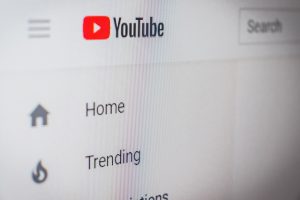Building an automated YouTube channel simplifies managing and growing your online presence. Automation refers to using systems, tools, or software to control and manage repetitive or time-consuming tasks. In the context of YouTube, this can include elements such as scheduling uploads, social sharing, engaging with comments, and tracking analytics.
Automating these tasks frees up time to focus on content creation and strategy, streamlining your operations and facilitating consistent growth. The ultimate goal is to create a channel where most administrative tasks are handled automatically while you concentrate on making high-quality videos that engage and entertain your audience.
This guide is tailored to beginners just starting with YouTube and looking for a foolproof way to automate their channel operations. It will take you through the entire process, from planning content structure and setting up automated tools to optimizing your workflow and tracking analytics.
Understanding Automation for YouTube Channels
Before diving into the technical aspects of automation, it’s essential to establish what it entails in the YouTube content creation field. Automation is using software or tools to carry out routine tasks, minimizing manual intervention, and improving efficiency.
With YouTube, automation can include aspects such as:
- Scheduled Uploads: Preparing and scheduling your videos for upload ahead of time. This ensures consistent posting and frees you from manually uploading every video.
- Comment Moderation and Engagement: Using software to filter and respond to comments helps to foster interaction and keep your channel a positive space.
- Social Sharing: Automatically share your new uploads to your social networks to increase reach.
- Analytics Tracking: Automated tools can gather and interpret data from your channel, helping you understand viewer behavior and video performance.
By automating these components, you can better focus on content creation and leave the repetitive tasks to your automated system.
Streamlining Channel Management with Automation Tools and Processes

Automation in YouTube channel management is all about efficiency and consistency. With the right tools and processes, you can achieve a streamlined operation that increases productivity and improves your channel’s performance.
- Efficient Time Management: Automation tools can handle mundane tasks, freeing up your time to focus on content creation and channel growth strategies. For example, scheduling tools allow you to plan and upload your content in advance, ensuring you stick to a consistent posting schedule without manually uploading each video.
- Consistent Engagement: Automation can also improve your audience engagement. Comment moderation and engagement tools can respond to viewers swiftly, fostering a sense of community and interaction. This can lead to increased viewer loyalty and higher chances of content sharing.
- Integrated Marketing Efforts: Social sharing automation can seamlessly integrate your YouTube content with other social media platforms, enhancing your online presence and extending your audience reach. Without manual intervention, your videos can immediately appear across multiple social media channels, boosting your visibility and brand recognition.
- Data-Driven Decision Making: Automated analytics tracking can provide insightful data about your channel’s performance and viewer behavior. This information lets you make informed decisions about future content creation and marketing strategies, tailoring your approach to maximize viewer engagement and channel growth.
Remember, the goal of automation is not to replace the need for human intervention but to enhance your channel management by handling repetitive tasks effectively. It leaves you with more time and energy to concentrate on what you do best—creating engaging content for your audience.
Benefits of Automation for YouTube Channels
Automation in YouTube channel management comes with several advantages:
- Increased Productivity: By handling routine tasks automatically, you’ll have more time and mental energy to devote to brainstorming, creating, and editing high-quality content. The overall productivity of the channel improves as more effort can be directed toward tasks that truly need your attention and expertise.
- Improved Consistency: Automation guarantees that uploads, viewer engagement, and social sharing occur consistently. This regularity can boost your YouTube algorithm ranking, as the platform favors channels that always post and engage regularly with their audience.
- Enhanced Viewer Engagement: Automated comment responses and quicker reaction times can lead to higher viewer engagement. The ability to quickly respond or react to comments can foster a sense of community and make viewers feel valued and appreciated.
- Expanded Reach: Automatic sharing of new uploads across various social media platforms can help to extend your reach and attract new viewership. It can also help streamline your marketing efforts by ensuring that your content is always shared at the right time and places.
- Data-Driven Strategy: Automated analytics tools can offer valuable insights into your channel’s performance and audience behavior. You can then use this data to refine your content strategy and make more informed decisions, thus improving your channel’s effectiveness and growth.
Step-by-Step Guide to Building an Automated YouTube Channel
Now that you understand the fundamentals of automation for YouTube, you should look at how to set up an automated system for your channel.
Define Your Niche and Audience

One of the critical steps in building an automated YouTube channel is defining your niche and target audience. The niche you choose determines the content type you’ll produce and the audience you’ll cater to. It is fundamentally the subject area that your YouTube channel will focus on, and it can be as broad or as specific as you like. But remember, a well-defined niche will help differentiate your channel from millions of others on the platform.
Meanwhile, identifying your target audience is equally important. Understanding the demographic you aim to attract and engage will influence your content’s tone, style, and subject matter. It will also inform your marketing strategies and how you interact with your viewers. Creating content tailored to your audience’s interests and needs increases the likelihood of attracting dedicated viewers who will engage regularly with your channel.
Therefore, a clearly defined niche and well-understood target audience form the foundation of an effective automated YouTube channel, influencing all subsequent steps from content creation to marketing and beyond.
Plan Your Content Strategy

Planning your content is a pivotal step in the automation process. This ensures a steady stream of content for your channel and significantly reduces the stress of last-minute content creation. With a well-structured plan, you can work efficiently and maintain consistency in your posting schedule, a factor highly favored by the YouTube algorithm.
By mapping out your content calendar, you can outline the videos you intend to create, the themes or topics they’ll cover, and when you’ll publish them. This allows you to align your content with key events, trends, or seasons, making your videos more timely and relevant. Furthermore, planning gives you the flexibility to adjust your content strategy based on performance analytics and feedback from your audience.
Remember, content planning aims to remain focused and organized, enabling you to deliver high-quality content consistently. This strategic approach enhances your channel’s performance and helps you better engage with your audience and grow your viewer base.
Set Up a YouTube Channel
Setting up a YouTube channel is the first technical step in your journey to automation. It’s a straightforward process that can be completed in just a few steps:
- Create a Google account: If you do not already have a Google account, you will need to create one. This account will be used to log in to YouTube and provide access to other Google services.
- Sign in to YouTube: Navigate to the YouTube homepage and click the “Sign In” button in the top right corner. Use your Google account credentials to log in.
- Create a new channel: Once signed in, click on the user icon in the top right corner. Select “Your Channel” from the dropdown menu. Click on “Create a new channel.”
- Choose a name for your channel: You’ll be prompted to create a channel name. This name should be relevant to your niche and resonate with your target audience. Click “Create” after you input your desired name.
- Customize your channel: After creating it, spend some time customizing it. Upload a profile picture, write a compelling channel description, and add links to your social media profiles or website.
- Adjust your privacy settings: Go to your channel settings and adjust your privacy settings as needed. You can choose to make your channel public or private and control who can comment on your videos.
- Enable channel features: In the settings, navigate to the “Channel” tab and then “Feature Eligibility.” Verify your account to enable additional features like live streaming, longer videos, and custom thumbnails.
You’ll have a YouTube channel ready to go by following these steps. Remember, the appearance and feel of your channel should reflect your brand and appeal to your target audience. You can always tweak and improve your channel as you grow and gain more insights about your audience.
Automate Video Uploading
Automating the process of video uploading is a crucial step in setting up a streamlined YouTube channel. This can be done using various scheduling tools on the YouTube platform.
- Prepare your content: This includes creating your video content, editing it, and ensuring it’s ready for upload. Ensure the video matches your content strategy and connects with your target audience.
- Sign in to your YouTube channel: Navigate to your YouTube account, click the ‘Create’ icon at the top right corner of the page, and select ‘Upload video.’
- Choose your video file: Click on ‘SELECT FILES’ and choose the video file you want to upload from your device.
- Enter video details: While your video is uploading, you can add necessary details like the video title, description, and tags. Optimizing these details can help your videos perform better in YouTube search results and suggested videos.
- Adjust video settings: YouTube allows you to adjust various settings for your video. You can enable or disable comments, choose a category for your video, add a video location, and select a language.
- Select schedule option: In the ‘Visibility’ step, instead of choosing to publish your video immediately, select ‘Schedule.’ Here you can select a date and time for your video to be automatically published. The scheduling tool allows you to plan up to 15 videos to go live in the future.
Remember, you can schedule your video anytime within the next 30 days. This means you can simultaneously prepare and upload multiple videos and have them automatically published according to your defined schedule. This ensures consistent posting and frees up your time to focus on other important aspects of channel management.
Optimize Video Titles and Descriptions
Optimized video titles and descriptions are crucial elements of effective YouTube automation. They play a significant role in how your videos are discovered and how they perform.
Firstly, a compelling and keyword-rich title can significantly increase your video’s visibility in YouTube’s search results, drawing in potential viewers. It is crucial to include relevant keywords that your target audience may use when looking for content similar to yours.
Secondly, an informative and engaging description provides viewers and YouTube’s algorithm with context about your video’s content. This can help drive higher engagement rates as users clearly understand what to expect from your video.
Furthermore, it allows YouTube’s algorithm to accurately categorize your content, which can lead to improved visibility and placement in suggested video feeds. Optimizing your video titles and descriptions is a crucial SEO strategy for improving your video’s reach, engagement, and overall performance on YouTube.
Automate Engagement Responses
Automating responses to viewer comments is key to effective YouTube channel management. It helps maintain an active and engaging community around your content, even when you can’t be present to respond in real-time. Here’s a step-by-step guide on how to set this up:
- Create Canned Responses: Canned responses are pre-written replies that can be used to answer common comments or inquiries. These should be friendly and engaging and convey your brand voice consistently. Make sure to create a variety of responses to avoid repetition and keep your interaction with the viewers dynamic.
- Use a Social Media Management Tool: Social media management tools like Hootsuite, Buffer, or Sprout Social can help you manage and automate your YouTube comments. These platforms provide features that allow you to schedule and automate replies to comments using your canned responses.
- Set Up Comment Moderation: YouTube also allows you to set up automatic comment moderation to help manage the comments section of your videos. You can choose to hold potentially inappropriate comments for review, hold all comments for review, or allow all comments. This helps ensure that the comments section remains positive and supportive.
- Set up Comment Filters: In the YouTube Studio, you can set up comment filters that automatically flag comments containing specific words, phrases, hashtags, or URLs you have identified. This again aids in maintaining a healthy and respectful community.
Remember, automated responses should be different from genuine engagement with your audience. Use this tool to handle the volume of comments but try to engage with your audience as much as possible personally. Personal replies to comments can significantly boost viewer loyalty and foster a stronger sense of community.
Leverage Social Media Automation
To extend your reach beyond YouTube, automating sharing your videos on other social media platforms is vital. Here’s how to do it:
- Connect Your YouTube Channel: The first step is to connect your YouTube channel to your social media profiles. You can do this by navigating to the ‘Settings’ section of YouTube Studio. Click on ‘Channel’ and then ‘Advanced Settings.’ In the ‘Feature Eligibility’ section, you will find a ‘Default Features’ section where you can link your social media accounts.
- Use Social Media Management Tools: Tools like Buffer, Hootsuite, or Sprout Social can streamline the process of sharing your YouTube content across multiple platforms. Simply link your social media accounts to these tools and schedule your posts in advance. When scheduling, ensure your posts are tailored to the specifics of each platform regarding image size, character count, and optimal posting times.
- Automate Your Posts: Most social media management tools allow you to automate when your posts go live. You can schedule your social media posts to match the release of your new YouTube videos. This way, your audience on various platforms gets notified when you publish new content.
Remember to tailor your captions to each platform, adding relevant hashtags and engaging prompts that encourage viewers to watch your video and engage with your post. The goal is to create a seamless viewer experience across all your social media platforms, driving more traffic to your YouTube channel and improving viewer engagement.
Monitor Analytics and Performance
To effectively manage and grow your automated YouTube channel, you must regularly monitor your performance using YouTube Analytics. Here is a simple guide for beginners on tracking video performance:
- Access YouTube Analytics: First, sign in to your YouTube account. Click on your profile icon in the top right corner and select ‘YouTube Studio.’ In the left menu, click on ‘Analytics.’
- Understand the Overview Tab: The Overview tab gives a snapshot of your channel’s performance, including views, watch time, and subscriber count. It also shows you how your latest video performs compared to your other videos.
- Use the Reach Tab: The Reach tab provides data on your video’s reach, including impressions, click-through rate, and unique viewers. This helps you understand how effectively your videos are reaching potential viewers.
- Check the Engagement Tab: The Engagement tab shows you how engaged your audience is with your content, detailing watch time and average view duration. This can give insights into whether viewers are watching your videos through.
- Look at the Audience Tab: The Audience tab gives information on who your viewers are, including their age, gender, and geographic location. This can help you tailor your content to better appeal to your audience.
- Monitor the Revenue Tab: If your channel is monetized, the Revenue tab will show you your earnings from ads, channel memberships, and YouTube Premium revenue.
Remember, using YouTube Analytics to monitor your performance regularly can help you better understand what works and what doesn’t on your channel, improving your content strategy and continually growing your viewership.
Challenges and Considerations
While setting up automation for your YouTube channel can significantly enhance your productivity and reach, beginners may face several challenges.
Understanding how to use scheduling tools effectively can be tricky, especially when navigating the numerous features of social media management platforms. Additionally, creating engaging, keyword-rich titles and descriptions that optimize video SEO may prove challenging for those new to the concept of SEO.
Automating responses to comments may also present difficulties. Crafting canned responses that sound genuine and engaging requires creativity and a solid audience understanding. Furthermore, it is critical to balance automating responses and engaging with your audience personally.
Monitoring analytics and interpreting data is another area where beginners might need help. Determining which metrics are important and how they should inform content strategy can be overwhelming.
Finally, managing multi-platform sharing can also be daunting, particularly ensuring that content is tailored appropriately for each platform. Despite these challenges, with patience, persistence, and continuous learning, new YouTubers can effectively automate their channels and optimize their reach and engagement.
Benefits of Staying Authentic
While automation can significantly improve the efficiency of managing a YouTube channel, it’s essential to remember that the core of what makes your channel unique is your authenticity. Indeed, automation tools are designed to assist with operational tasks and not to replace the genuine connection between you and your audience.
Authenticity resonates with viewers and fosters a sense of trust and loyalty. This personal touch gives your content a distinctive voice and keeps your audience coming back for more. Therefore, as you leverage automation to streamline your workflow, ensure that your unique personality and authentic engagement remain at the forefront of your YouTube journey.
Future Trends in YouTube Automation
Technology advancements are driving new trends in YouTube automation tools and techniques, propelling the platform’s capabilities to new heights.
Firstly, Artificial Intelligence (AI) and Machine Learning (ML) technologies are increasingly infused in automation tools. They aid in data analysis, predicting trends, and audience engagement patterns, facilitating more strategic content planning and audience targeting.
Another significant trend is the increased integration of automation tools across multiple platforms. This extends the automation capabilities beyond YouTube, enabling seamless multi-platform content sharing and analytics.
Additionally, the use of Chatbots for automated comment moderation and response is gaining popularity. These AI-driven tools can interact with users, answer queries, and moderate comments in real-time, significantly enhancing engagement.
Lastly, advancements in video SEO tools are also noteworthy. These tools are becoming more sophisticated, providing deeper insights and optimizing video titles, descriptions, and tags more effectively. They help improve a video’s searchability and visibility, increasing viewer engagement.
These emerging trends indicate a bright future for YouTube automation, promising to make channel management more efficient and effective while enabling creators to focus more on producing high-quality content.
Conclusion
Building an automated YouTube channel involves several key steps. These include setting a consistent content posting schedule, optimizing video titles and descriptions for better discoverability, and automating engagement responses to maintain an active community.
Leveraging social media automation is crucial for extending your reach beyond YouTube, while monitoring analytics and performance will help you understand your channel’s growth and areas for improvement. While automation can significantly enhance productivity, maintaining authenticity is vital for viewer loyalty. Lastly, staying updated with future trends in YouTube automation, such as AI and ML technologies, multi-platform integration, and advanced SEO tools, will ensure your channel remains competitive and engaging.





